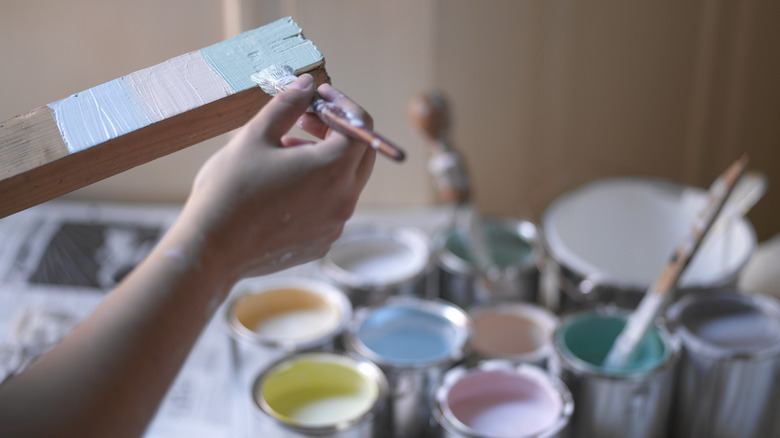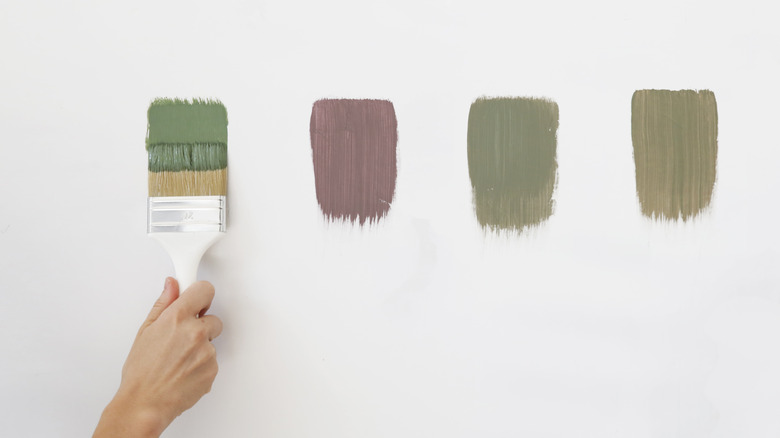The Easy Test That'll Help You Determine The Undertone Of Your Paint Color
Neutral décor has constantly been a popular interior design choice, from kitchens to living rooms, because it seemingly makes remodels a lot easier. Whether it's gray on gray, white on white, or beige and taupe, anodyne hues have been at the forefront for a while. But neutrals pack a lot more punch color-wise than you may first imagine. As the paint company Benjamin Moore explains, paints have a myriad of undertones, which complicates your decorating exponentially.
Every neutral we coat our walls with has a hidden undertone underneath. The key to finding the perfect shade of paint for you is to unlock this hidden tone by comparing it with stark white. The easiest way to get a sample of pure white with no undertone is to go to your printer or access a copy machine and pull out a standard 8-1/2 by 11 sheet of paper, as regular copy paper is as neutral as the manufacturer can make it. Holding paint chips against the whiteness of the copy paper is an easy way to determine what undertone is lurking within that sample.
Different context, different color
Interior designer Marissa Warner is the founder and creative director for The Home Narrative. In a recent TikTok, she demonstrates the technique for finding that undertone in your neutral. She also explains how it's best to compare the paint chip to the plain white paper, rather than comparing the paint chip to what's already on your wall.
The reason for this disconnect between chip and true paint is twofold. First, the light in a paint store is most likely a bright, clear fluorescent light meant to show colors off to their best advantage. But few of us have light so intense and bright in our homes. The other factor is context. Looking at paint chips in a store with a plain background is also very different than what's in our homes. The color of the carpet or floor, for example, or the light bouncing off the neighbor's brick wall or white fence at certain times of the day, can radically change how a shade looks.
First, test your color
Knowing the undertone in advance of your painting job will save time and money. Once you identify the undertone, you'll be able to determine if the paint chip is a warm or cool shade. Warm tones include red, yellow, orange, and pink, while blue and green are cool tones. Warm tones tend to make a room feel more cozy, while cool tones are calming. In either case, knowing what the undertone in your paint is before applying it to the wall will give you the outcome you envision for your interior. Picture a room with furniture in shades of navy and light green being painted in a gray shade with warm undertones. Your green furniture could start looking yellow, or the walls may take on a blush tone.
Regardless of what hues you're considering, experts indicate the best way to test the color is to paint a swatch directly onto the wall. Paint a swatch at least 12 x 12, allowing the first coat to dry, and then apply a second coat. Be sure to observe the swatches throughout the day, as the color will change with variable lighting and different light sources.


